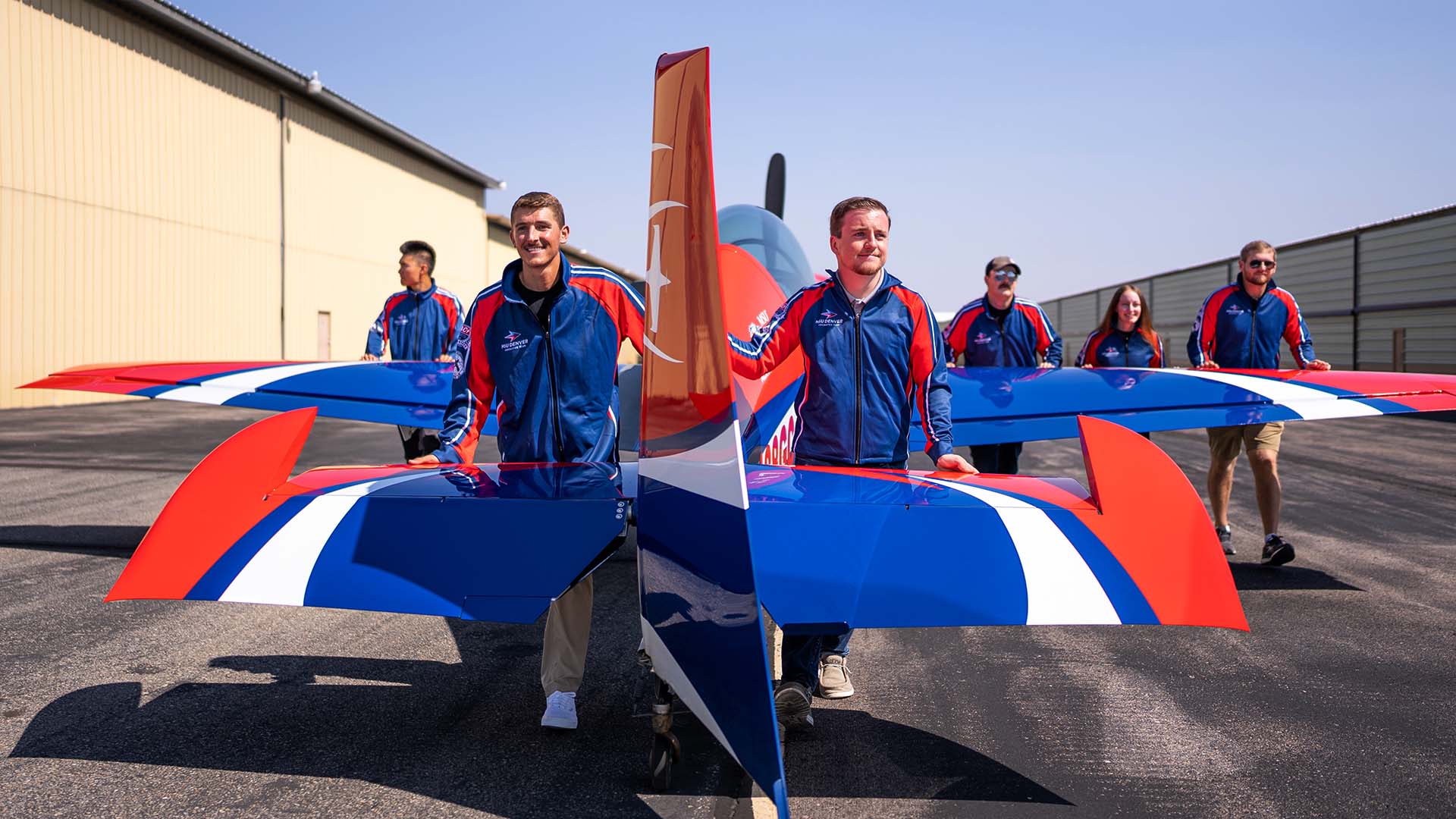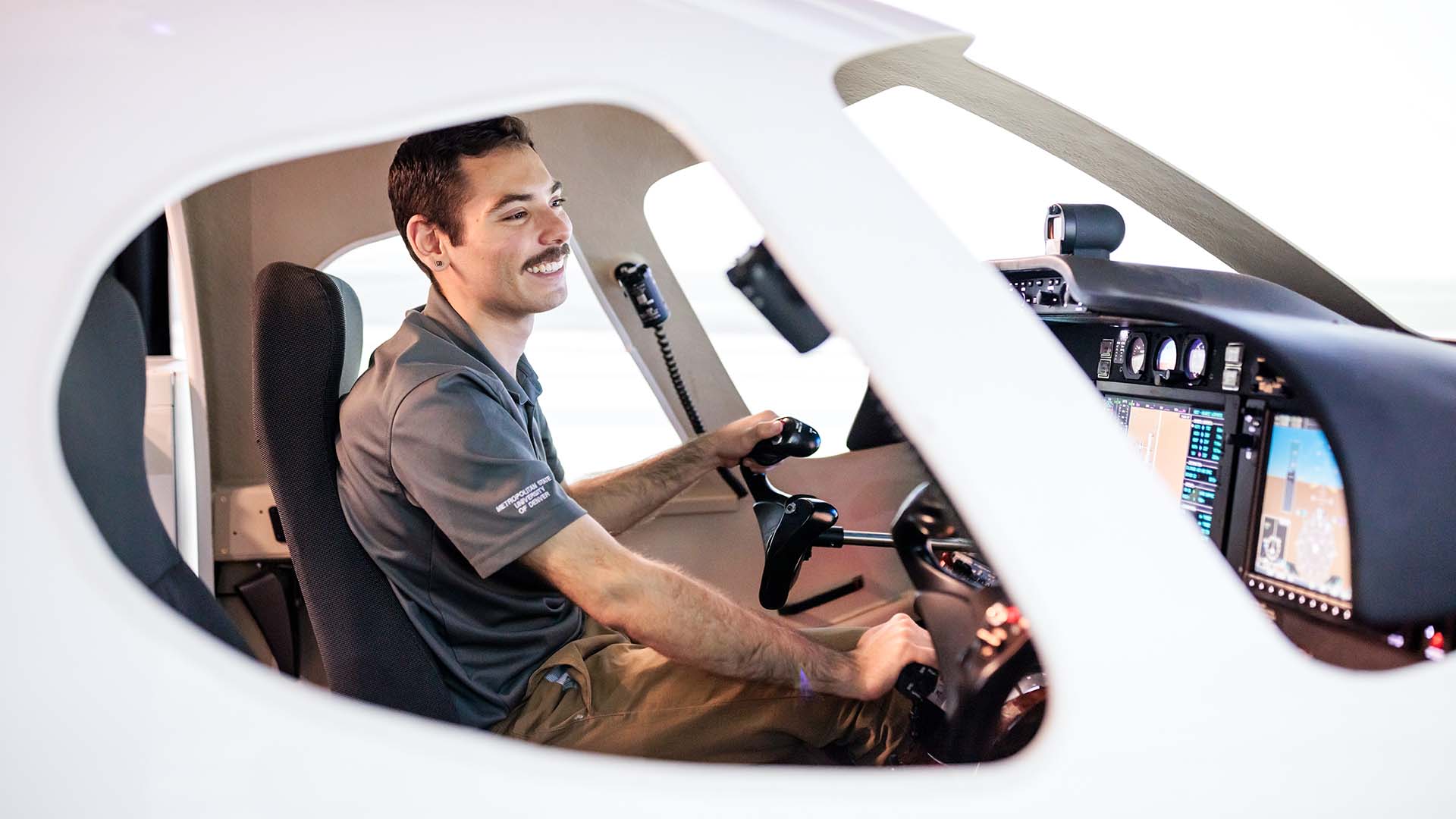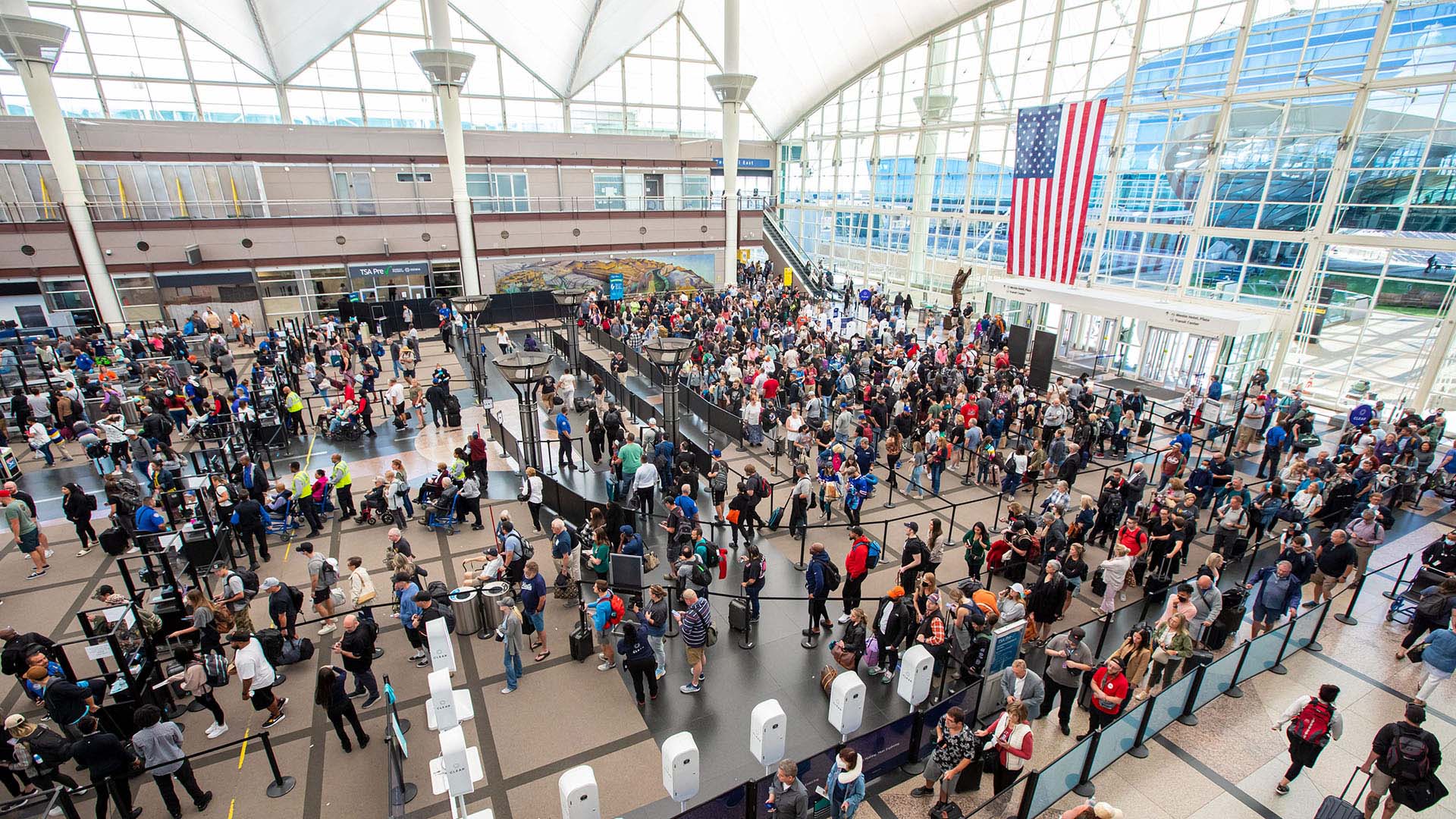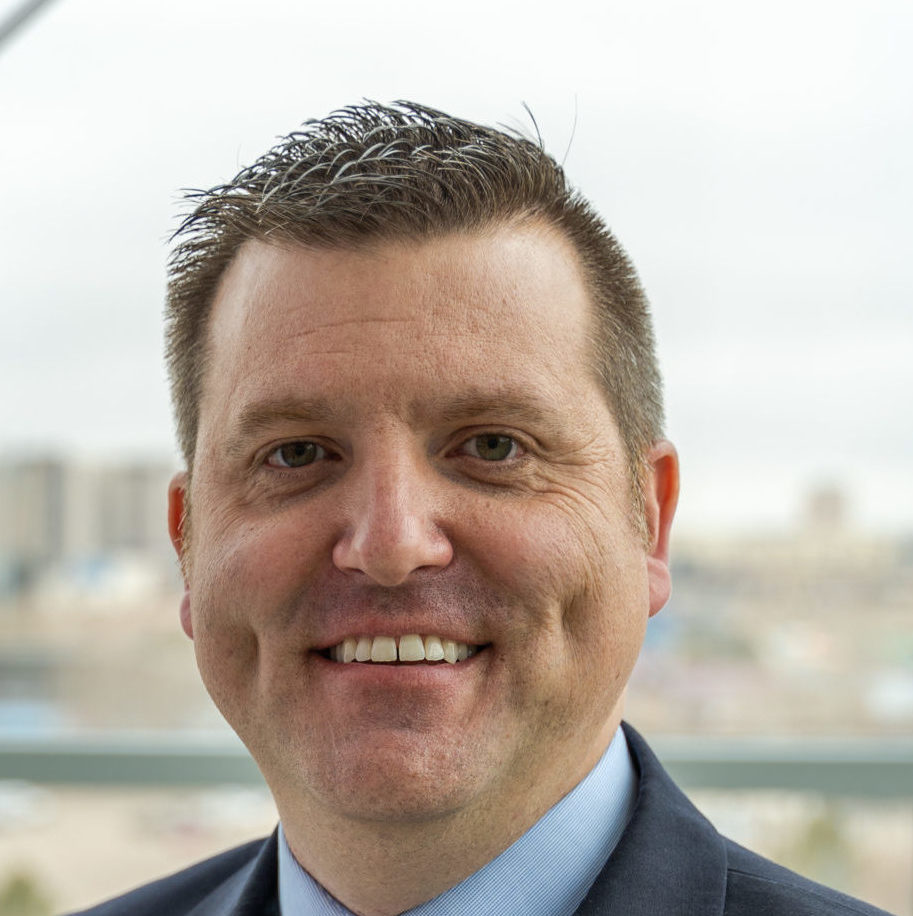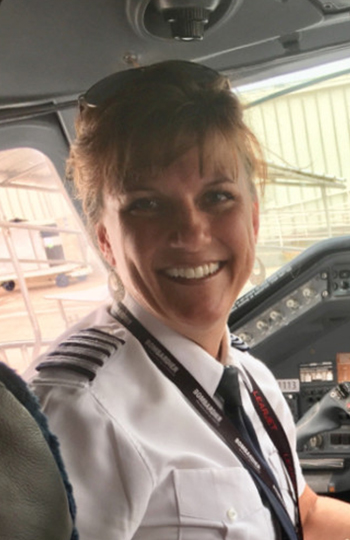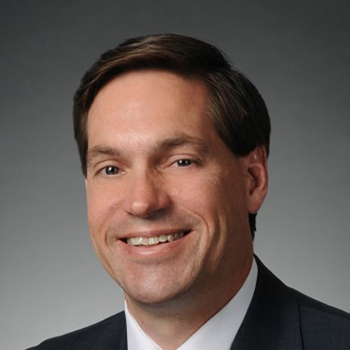Head in the books, career in the clouds
Aviation student saves thousands of dollars by connecting with a program poised to fill a pilot-shortage pipeline
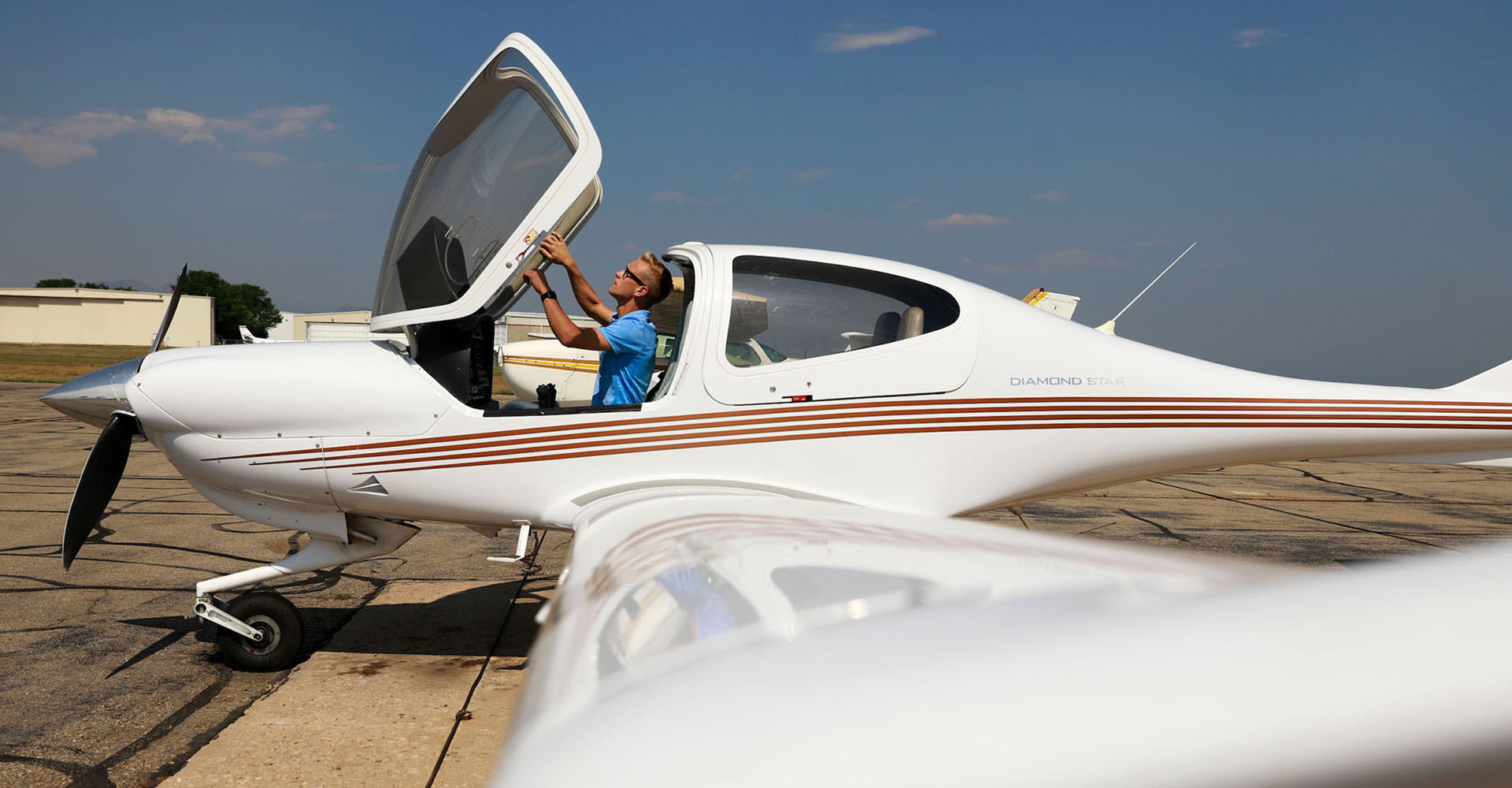
Branden Hockaday grew up in the small farming town of Mead, close to Longmont. He set his sights on a flight degree after high school and picked his path to the runway for practical reasons: Colorado Northwestern Community College offers an associate degree in aviation technology, with flight certification, at its high-desert campus in the remote town of Rangely, 280 miles from Denver near the Utah border.
And it’s a flight-friendly environment that’s already served Hockaday, who continued his education at Metropolitan State University of Denver, exceptionally well.
“It was a lot (less expensive) than every other flight school around,” he says. “The small-town vibe of Rangely didn’t scare me.”

Just getting off the ground this fall, a new partnership between MSU Denver and CNCC aims to keep students’ costs down while getting them into commercial cockpits faster – and at the same time, help stem a nationwide scarcity of airline pilots.
“There’s a significant, 20-year shortage ahead of us with no real solution that’s out there,” says Jeffrey Forrest, Ph.D., chair of MSU Denver’s Department of Aviation and Aerospace Science.
The Federal Aviation Administration declared pilot shortages in the regional airlines this year – “carrier consolidation and new rules on pilot training have left regional carriers saddled with either excess capacity or a lack of pilots,” according to the FAA Aerospace Forecast – and several other organizations are predicting future shortfalls nationally and worldwide. The University of North Dakota’s U.S. Airline Pilot Supply Forecast, published in 2016, predicts a shortage of more than 14,000 pilots in the U.S. airline fleet by 2026. Training provider CAE projects 225,000 new airline pilots will be needed worldwide by 2027; Boeing Co. puts the number at 637,000 needed globally by 2036.
So, how does this relationship provide greater statewide access to an increasingly in-demand workforce pipeline?
Students who opt to pursue CNCC’s associate degree on their way to earning a bachelor’s from MSU Denver can save money on housing and flight instruction – plus Rangely has a “beautiful little airport,” Forrest says.
CNCC offers flight training as part of the curriculum, whereas students in MSU Denver’s program have previously had to take flight training from private providers around the Front Range. That’s changing under the partnership as well.
For MSU Denver students who can’t spend time in Rangely, CNCC’s budget-friendlier flight instruction will still be an option. Under the agreement, CNCC and MSU Denver are offering FAA-approved Part 141 flight instruction at Front Range Airport east of Denver.
CNCC also offers students an added benefit to help them get hired by an airline sooner, and students earning the dual degree will tack on that advantage as well.

Instructing is one traditional route by which new pilots earn enough hours to legally fly for an airline. They needed fewer hours in the past to become airline first officers, or co-pilots, but that changed in 2013 when Congress, in response to a 2009 crash in New York state, effectively raised the requirement from 250 hours to 1,500 by mandating that new first officers earn the FAA’s Airline Transport Pilot certificate, as captains must do.
And those changes add up financially. New pilots who don’t earn hours by teaching can expect about a two-year wait and $100,000 in expenses over the expectation from five years ago, according to the Regional Airline Association. The FAA lets students of certain higher-education institutions apply for a restricted-privileges ATP at 1,250 hours, and those attending under the MSU Denver-CNCC partnership will have that chance.
Hockaday maxed out his opportunity to earn flight hours at CNCC, becoming a certified flight instructor in less than a year — a feat usually accomplished by the conclusion of the two-year degree. Without the 250-hour reduction, he estimates that he would have had to instruct for another eight to 10 months before he could apply at the airlines.
By starting early as an instructor and taking advantage of the reduced hours, Hockaday expects to have about 1,250 hours when he graduates from MSU Denver this spring. He’ll have a bachelor’s in aviation and aerospace science with a concentration in professional flight officer, plus he completed a United Airlines internship along the way.
“I worked really hard at it, and I studied hard,” Hockaday says.
It’s a testament to the tenacity that’s part of the Roadrunner Difference. Of course, he concedes, Rangely’s limited alternatives might have had something to do with staying grounded and giving his studies some cloud-bound lift, too.
“There was a long time there when there was nothing but my head in the books,” Hockaday says.

